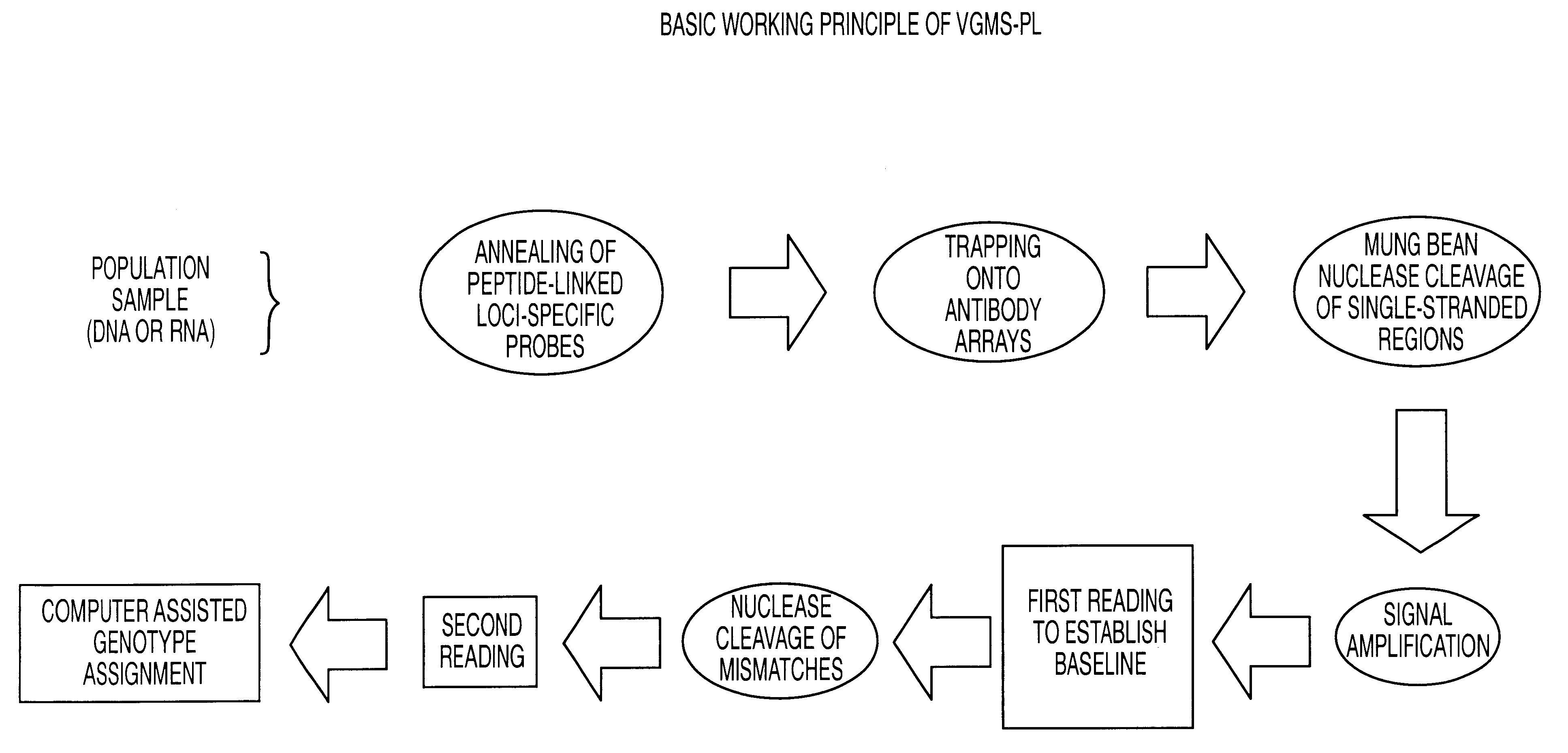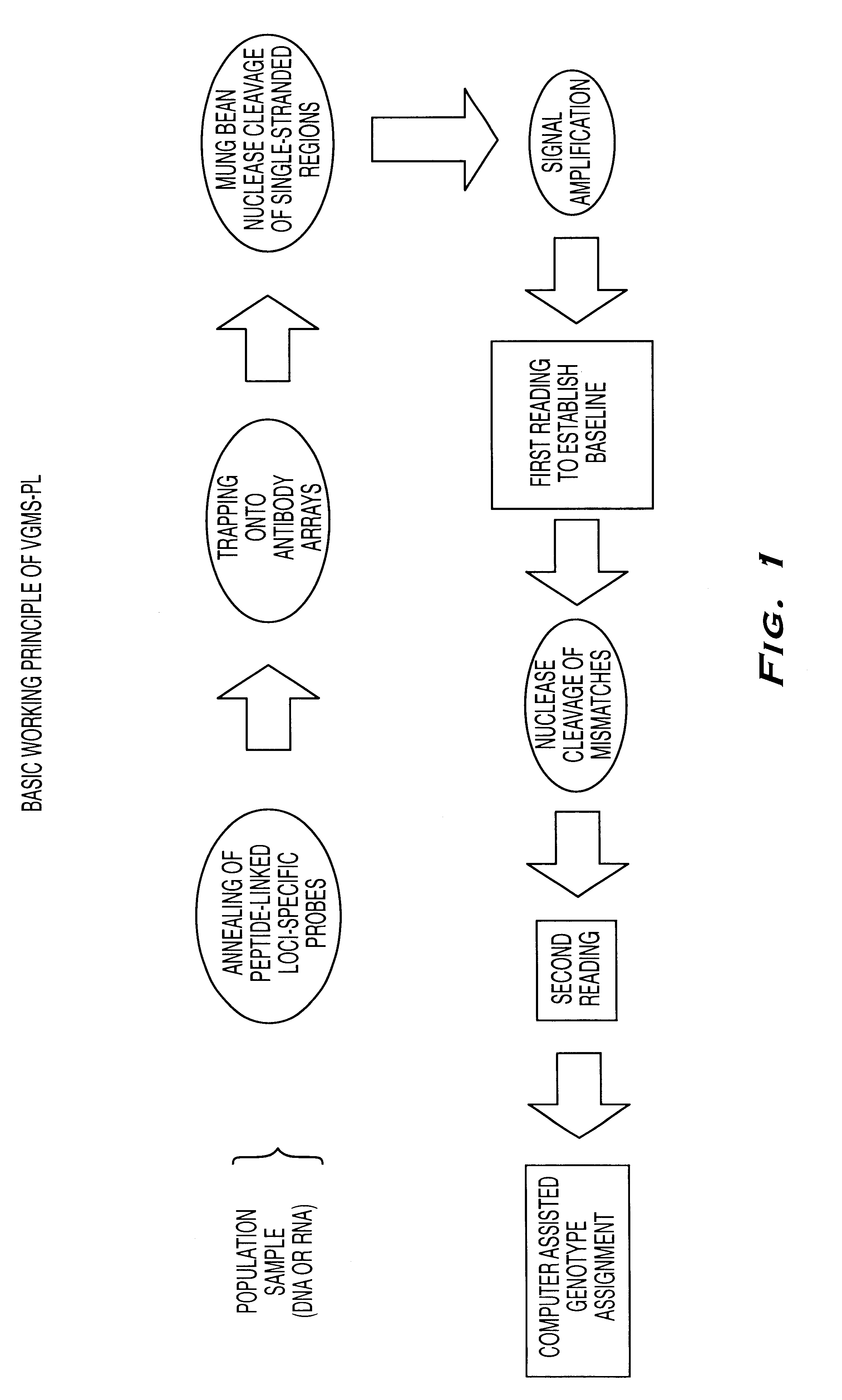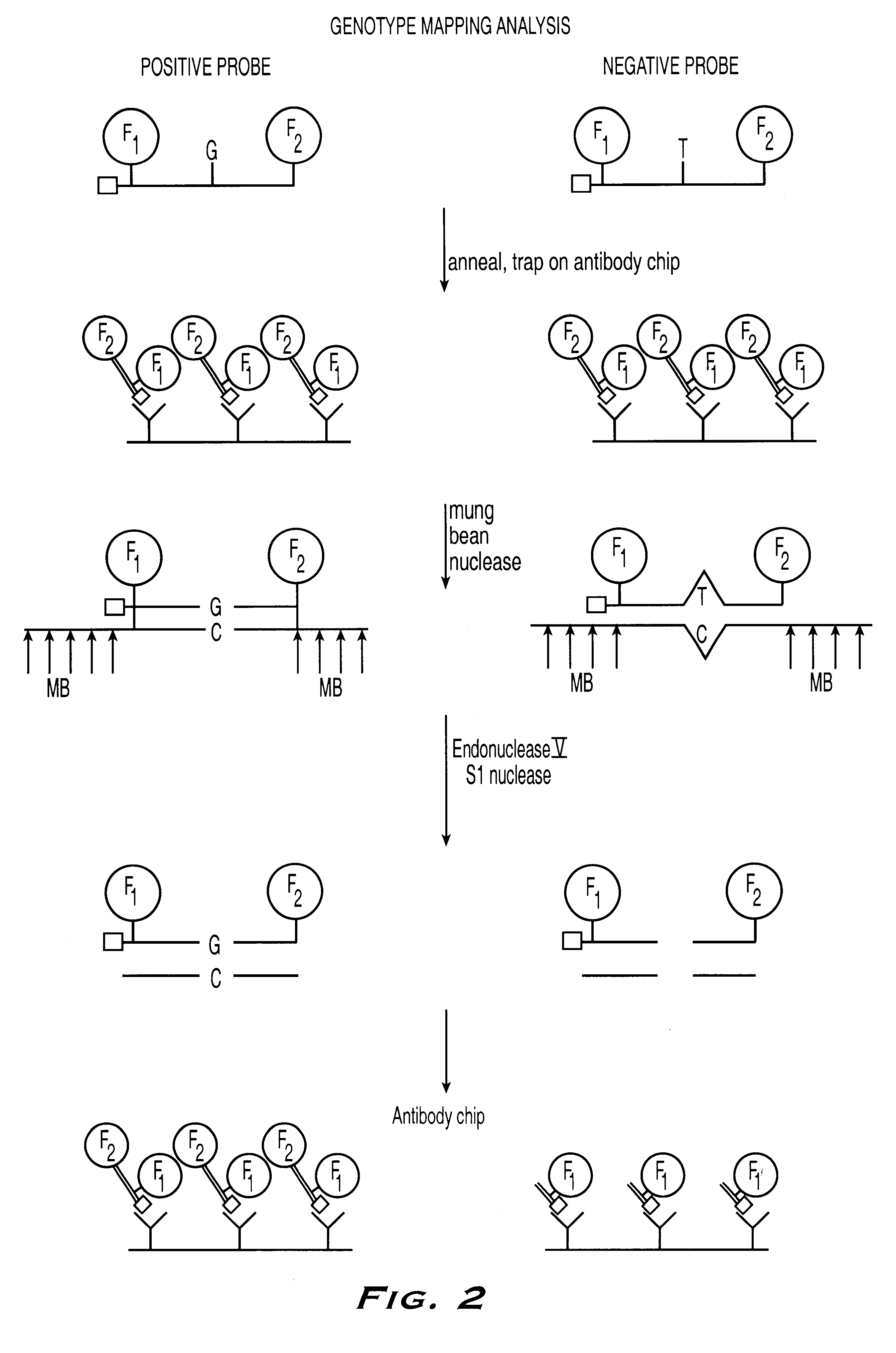Methods for detection of nucleic acid polymorphisms using peptide-labeled oligonucleotides and antibody arrays
a technology of peptide-labeled oligonucleotides and nucleic acid polymorphisms, which is applied in the field of screening nucleic acid populations for nucleotide polymorphisms, can solve the problems of increasing exponentially the number of errors in the final reaction product, and reducing the efficiency of mismatch detection
- Summary
- Abstract
- Description
- Claims
- Application Information
AI Technical Summary
Benefits of technology
Problems solved by technology
Method used
Image
Examples
Embodiment Construction
The present invention provides methods referred to generally as ValiGene.SM. Mutation Screening, Peptide-Linked methods (VGMS-PL methods) for identifying polymorphisms present in populations of nucleic acids. The methods may be used for, for example, determining drug response and toxicity, diagnosing genetic disorders, determining predisposition and risk factors for genetic diseases, determining an individual's identity or ancestry, and correlating genetic sequences with physical disorders or syndromes.
In currently available genotyping methods, a PCR step is typically used to increase the amount of a given target within a genomic sample by amplification of the entire sample to increase its detection. In the present invention, detection is increased by amplification of the signals from a number of limited targets, obviating the need for a PCR amplification step. Signal amplification is achieved by incorporation of affinity groups into the peptide-labeled oligonucleotide probe, and, i...
PUM
| Property | Measurement | Unit |
|---|---|---|
| Fraction | aaaaa | aaaaa |
| Nanoscale particle size | aaaaa | aaaaa |
| Nanoscale particle size | aaaaa | aaaaa |
Abstract
Description
Claims
Application Information
 Login to View More
Login to View More - R&D
- Intellectual Property
- Life Sciences
- Materials
- Tech Scout
- Unparalleled Data Quality
- Higher Quality Content
- 60% Fewer Hallucinations
Browse by: Latest US Patents, China's latest patents, Technical Efficacy Thesaurus, Application Domain, Technology Topic, Popular Technical Reports.
© 2025 PatSnap. All rights reserved.Legal|Privacy policy|Modern Slavery Act Transparency Statement|Sitemap|About US| Contact US: help@patsnap.com



